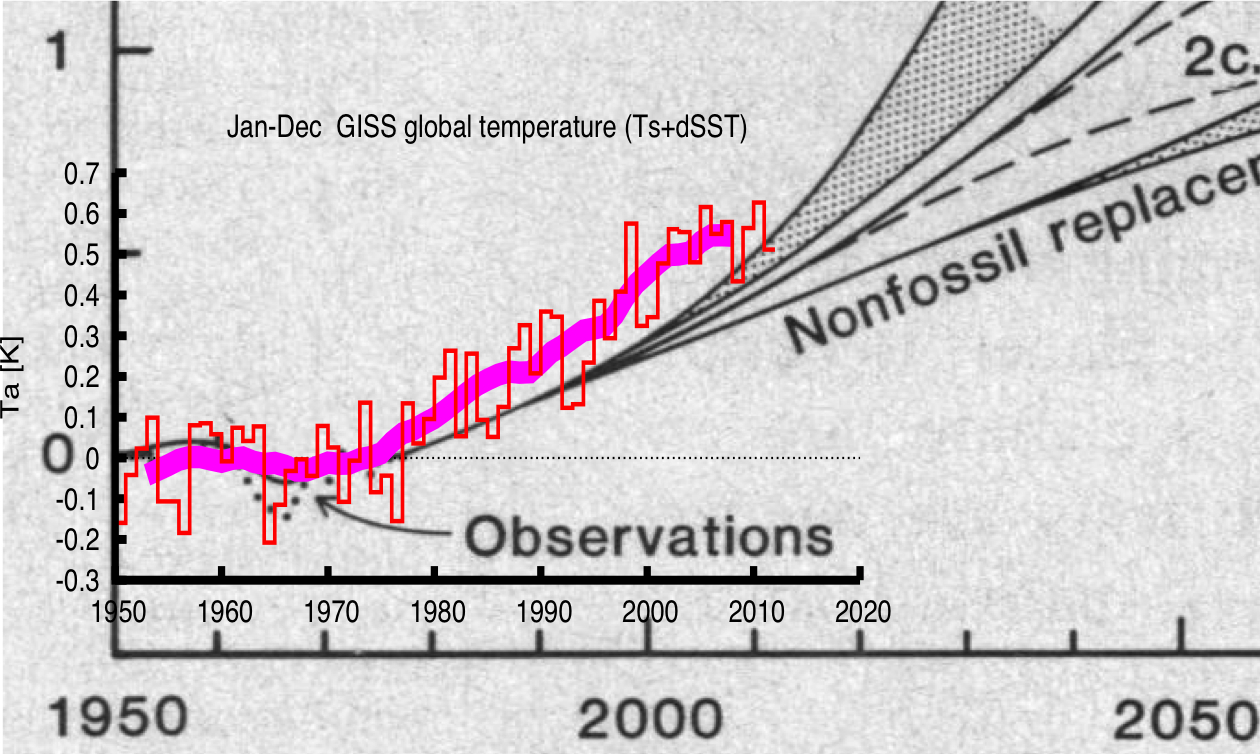Comparing Hansen et al's 1981 projection of climate change with actual history
Real Climate has a brief post comparing the temperature projections contained in a paper in Science from 1981 [1] to what actually happened, showing that the projections underestimated actual warming from greenhouse gas emissions by about 30%. It’s still good agreement for a long-term forecast, and it shows that the initial projections based on physical principles have more or less come to pass. As the article states
…a projection from 1981 for rising temperatures in a major science journal, at a time that the temperature rise was not yet obvious in the observations, has been found to agree well with the observations since then, underestimating the observed trend by about 30%, and easily beating naive predictions of no-change or a linear continuation of trends. It is also a nice example of a statement based on theory that could be falsified and up to now has withstood the test.
This is a wonderful example of retrospective comparison of a forecast with actual history, something that is rarely done [2]. Now some enterprising Ph.D. student needs to dissect the Hansen analysis, decompose the drivers of emissions and GHG concentrations into their component parts using the methods in [3], compare them to historical developments at a detailed level, determine where Hansen et al. got it right and where they got it wrong, and they’ll have a terrific thesis on their hands.
Here’s the key graph:

References
1. J. Hansen, D. Johnson, A. Lacis, S. Lebedeff, P. Lee, D. Rind, and G. Russell, “Climate Impact of Increasing Atmospheric Carbon Dioxide”, Science, vol. 213, 1981, pp. 957-966.DOI.
2. Koomey, Jonathan G., Paul Craig, Ashok Gadgil, and David Lorenzetti. 2003. “Improving long-range energy modeling: A plea for historical retrospectives." The Energy Journal (also LBNL-52448). vol. 24, no. 4. October. pp. 75-92. Email me for a copy
3. Hummel, Holmes. 2006. Interpreting Global Energy and Emission Scenarios: Methods for Understanding and Communicating Policy Insights. Thesis, Interdisciplinary Program on Environment and Resources, Stanford University. [http://www.holmeshummel.net/Dissertation.htm]
